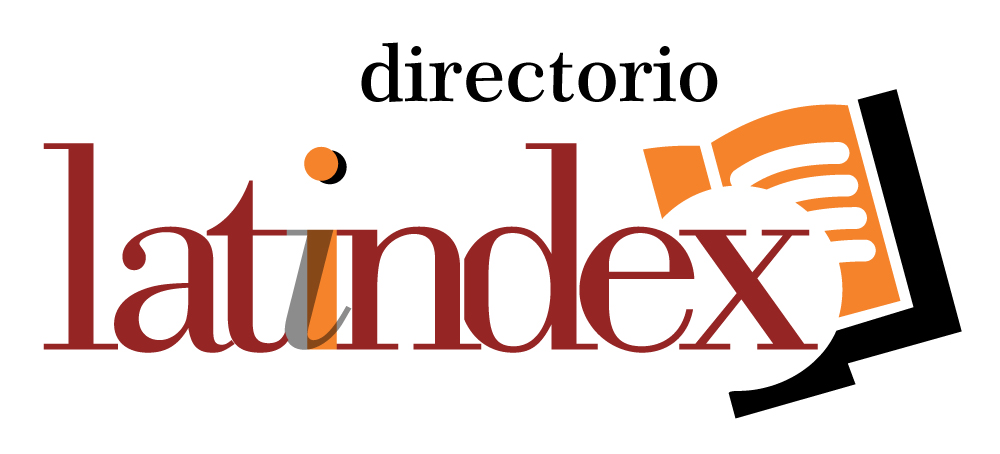Relationship between timely activation of the Blue Key and maternal outcomes in hypertensive disorders of pregnancy: role of the nursing team
DOI:
https://doi.org/10.71112/n1bzq360Keywords:
blue key, obstetric nursing, hypertensive disorders of pregnancy, maternal morbidity, patient safetyAbstract
Pregnancy hypertension remains one of the leading causes of maternal morbidity and mortality in Latin America, despite advances in rapid response protocols. In this context, the present study analyzed the relationship between timely activation of the Clave Azul protocol and maternal outcomes in women with hypertensive disorders of pregnancy, emphasizing the role of the nursing team. A retrospective analytical study was conducted in a tertiary public hospital during 2025, with a sample of 132 patients. Activation times, nursing performance, and clinical outcomes were evaluated using bivariate analysis, multivariate regression, and statistical mediation. The findings demonstrated that each ten-minute delay in activation increased the likelihood of severe maternal morbidity by 45%, while better nursing performance significantly reduced this risk and mediated 27% of the total effect of time on morbidity. Furthermore, an increase in the need for ICU admission and length of hospital stay was observed with delayed activation. The results confirm that the timely response and technical competence of nursing staff are essential protective factors for maternal safety and the effectiveness of the Blue Key protocol.
Downloads
References
Almutairi, A., Al-Shammari, F., & Khalil, S. (2025). Enhancing competencies of obstetrical nurses and midwives through simulation-based training for postpartum hemorrhage management. BMC Nursing, 24(1), 122–133. https://doi.org/10.1186/s12912-025-0123-9
Arias, M., Torres, G., & Vaca, L. (2024). Mortalidad materna y morbilidad hipertensiva en hospitales de referencia del Ecuador, 2019–2023. Revista Ecuatoriana de Obstetricia y Ginecología, 31(2), 45–58. https://doi.org/10.32776/reog.312.2024
Baron, R. M., & Kenny, D. A. (1986). The moderator–mediator variable distinction in social psychological research: Conceptual, strategic, and statistical considerations. Journal of Personality and Social Psychology, 51(6), 1173–1182. https://doi.org/10.1037/0022-3514.51.6.1173 DOI: https://doi.org/10.1037//0022-3514.51.6.1173
Committee on Publication Ethics (COPE). (2019). Ethical guidelines for peer reviewers. Londres: COPE. https://publicationethics.org/resources/guidelines-new/cope-ethical-guidelines-peer-reviewers
Countouris, M. E., Nair, R., Brubaker, S. G., & Sibai, B. M. (2025). Severe hypertension in pregnancy: Timely treatment and maternal outcomes. American Journal of Obstetrics and Gynecology, 232(1), 34–44. https://doi.org/10.1016/j.ajog.2024.09.012 DOI: https://doi.org/10.1016/j.ajog.2024.09.012
di Pasquo, E., Giannubilo, S. R., Valentini, B., Salvi, S., Rullo, R., Fruci, S., Filippi, E., Ornaghi, S., Zullino, S., Rossi, F., Farsetti, D., Di Martino, D. D., Vasapollo, B., Locatelli, A., De Santis, M., Ciavattini, A., Lanzone, A., Mecacci, F., Ferrazzi, E., Valensise, H., … Ghi, T. (2024). The "Preeclampsia and Hypertension Target Treatment" study: A multicenter prospective study to evaluate the effectiveness of the antihypertensive therapy based on maternal hemodynamic findings. American Journal of Obstetrics & Gynecology MFM, 6(5), 101368. https://doi.org/10.1016/j.ajogmf.2024.101368 DOI: https://doi.org/10.1016/j.ajogmf.2024.101368
Emeruwa, U. N., et al. (2025). Lasix for the prevention of de novo postpartum hypertension. American Journal of Obstetrics and Gynecology. https://www.ajog.org/article/S0002-9378(24)00522-2/fulltext DOI: https://doi.org/10.1016/j.ajog.2024.04.016
Hayes, A. F. (2018). Introduction to mediation, moderation, and conditional process analysis: A regression-based approach (2nd ed.). Guilford Press.
Hup, R. J., Damen, J. A. A., & Terstappen, J. (2025). Oral antihypertensive treatment during pregnancy: A systematic review and network meta-analysis. American Journal of Obstetrics and Gynecology. Advance online publication. https://www.ajog.org/article/S0002-9378(25)00218-2/fulltext DOI: https://doi.org/10.1016/j.ajog.2025.04.011
IBM Corp. (2025). IBM SPSS Statistics for Windows, Version 29.0. Armonk, NY: IBM Corp.
Kannappan, S., Chandrasekaran, S., Venkatesan, L., & Ashok, M. (2025). Impact of an obstetrical emergency simulation learning module on midwifery students’ competency: A non-randomized control study. Cureus, 17(3), e81532. https://doi.org/10.7759/cureus.81532 DOI: https://doi.org/10.7759/cureus.81532
Komolafe, A., Olajubu, A. O., Ijarotimi, O. A., Ogunlade, O. B., Olowokere, A. E., & Irinoye, O. O. (2024). Adherence to practice guidelines in the implementation of emergency obstetric and newborn care in referral hospitals in Osun State, Nigeria. SAGE Open Nursing, 10, 1–10. https://doi.org/10.1177/23779608231226064 DOI: https://doi.org/10.1177/23779608231226064
McElrath, T. F., Garcia-O’Connor, A., Wang, J., et al. (2025). Utility of the USPSTF preeclampsia risk assessment for aspirin candidacy and patient outcomes. JAMA Network Open, 8(10), e233. https://jamanetwork.com/journals/jamanetworkopen/fullarticle/2836551 DOI: https://doi.org/10.1001/jamanetworkopen.2025.21792
Mendoza-Cáceres, M. A., Moreno-Pedraza, L. C., Becerra-Mojica, C. H., & Díaz-Martínez, L. A. (2020). Resultados maternos y fetales de embarazos con trastornos hipertensivos: Un estudio transversal. Revista Chilena de Obstetricia y Ginecología, 85(1), 14–23. https://doi.org/10.4067/S0717-75262020000100014 DOI: https://doi.org/10.4067/S0717-75262020000100014
Ministerio de Salud Pública del Ecuador. (2017). Guía de práctica clínica: Trastornos hipertensivos del embarazo. Quito: MSP. https://www.salud.gob.ec
Ministerio de Salud Pública del Ecuador. (2023). Informe nacional de salud materna y neonatal 2023. Quito: MSP. https://www.salud.gob.ec
Ngene, N. C., & Moodley, J. (2024). Preventing maternal morbidity and mortality from preeclampsia and eclampsia, particularly in low- and middle-income countries. Best Practice & Research Clinical Obstetrics & Gynaecology, 94, 102473. https://doi.org/10.1016/j.bpobgyn.2024.102473 DOI: https://doi.org/10.1016/j.bpobgyn.2024.102473
Peng, C., Acharya, M., Khattab, B., et al. (2025). Evaluación de la implementación de paquetes de medidas de seguridad materna para hemorragia obstétrica e hipertensión grave durante el embarazo en Arkansas. BMC Pregnancy and Childbirth, 25, 793. https://doi.org/10.1186/s12884-025-07896-3 DOI: https://doi.org/10.1186/s12884-025-07896-3
Prior, T., Taylor, R., Gibson, K., & Allen, S. (2024). Patient safety bundle for severe hypertension in pregnancy: Implementation and outcomes in obstetric units. Obstetrics & Gynecology, 143(2), 356–366. https://doi.org/10.1097/AOG.0000000000005672 DOI: https://doi.org/10.1097/AOG.0000000000005672
Radparvar, A. A., Vani, K., Fiori, K., Zhang, Y., & Brown, C. M. (2024). Hypertensive disorders of pregnancy: Innovative management strategies and future directions. JACC: Advances, 3, 100864. https://doi.org/10.1016/j.jacadv.2024.100864 DOI: https://doi.org/10.1016/j.jacadv.2024.100864
Roberts, J. M., King, T. L., Barton, J. R., Saade, G. R., Brown, C. M., … Sibai, B. M. (2023). Care plan for individuals at risk for preeclampsia: Shared approach to education, strategies for prevention, surveillance, and follow-up. American Journal of Obstetrics and Gynecology, 229(3), 193–213. https://doi.org/10.1016/j.ajog.2023.04.023 DOI: https://doi.org/10.1016/j.ajog.2023.04.023
Tadese, F., Gebremariam, A., & Bekele, A. (2024). Hypertensive disorders of pregnancy and maternal outcomes: A systematic review and meta-analysis. PLOS ONE, 19(2), e0298123. https://doi.org/10.1371/journal.pone.0298123 DOI: https://doi.org/10.1371/journal.pone.0298123
Trahan, M.-J., Plourde, M., Clouatre, A., Wou, K., Pavilanis, A., Fortune, R., … Bujold, E. (2025). A quality improvement intervention to optimize the management of severe hypertension during pregnancy and postpartum. Pregnancy Hypertension, 39, 101192. https://doi.org/10.1016/j.preghy.2025.101192 DOI: https://doi.org/10.1016/j.preghy.2025.101192
World Health Organization, UNICEF, UNFPA, World Bank Group, & UNDESA/Population Division. (2023). Trends in maternal mortality estimates 2000 to 2023: Estimates by WHO, UNICEF, UNFPA, World Bank Group and UNDESA/Population Division. Geneva: World Health Organization. https://www.unfpa.org/sites/default/files/pub-pdf/9789240108462-eng.pdf
World Medical Association. (2013). World Medical Association Declaration of Helsinki: Ethical principles for medical research involving human subjects. JAMA, 310(20), 2191–2194. https://doi.org/10.1001/jama.2013.281053 DOI: https://doi.org/10.1001/jama.2013.281053
Downloads
Published
Issue
Section
License
Copyright (c) 2025 Multidisciplinary Journal Epistemology of the Sciences

This work is licensed under a Creative Commons Attribution 4.0 International License.











